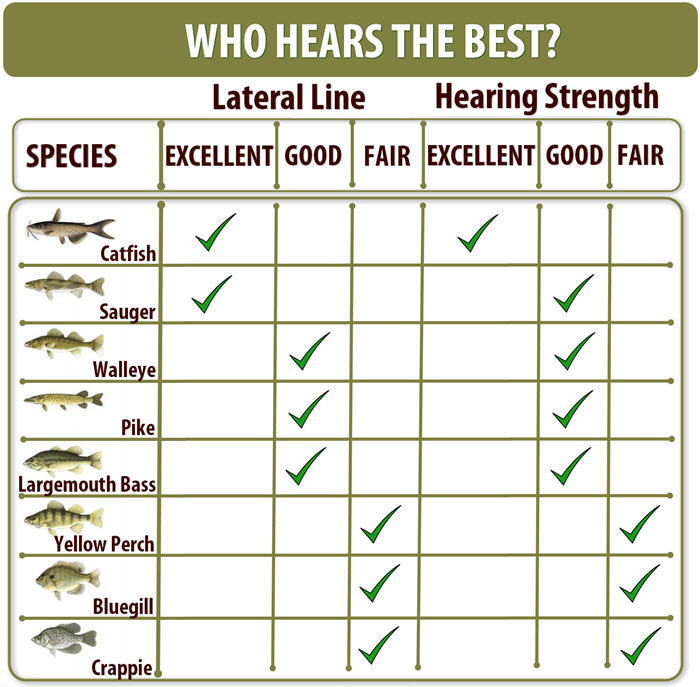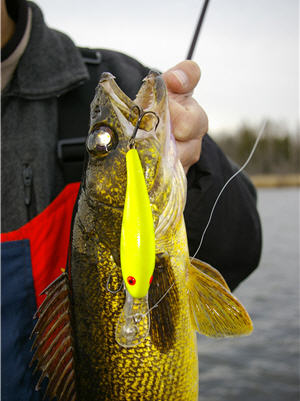
Tips on how anglers can use sound to their advantage.
Unlike humans, fish have two sensors for detecting sound: the inner ear and the lateral line. These two systems work independently of each other to hear and feel particle motion and pressure changes. The systems are able to correlate and send signals to various parts of the brain to initiate a reaction or function.
 |
|
Catfish receive top rating for both lateral-line detection and hearing strength, according to a survey of prominent fish physiologists and fisheries biologists. The sauger is also given an excellent rating for its lateral line, while walleye, pike, and largemouth bass receive a good grade. Yellow perch, bluegill, and crappie rank only fair. In terms of hearing, walleye, sauger, pike, and largemouth come in at good, while yellow perch, bluegill, and crappie score the lowest grade once again. |
All lures produce sound. Whether it's a rattling worm weight that sends out high-pitched frequencies or a wobbling crankbait that produces detectable vibrations throughout the water column, most sounds will be picked up by the lateral line or inner ear.
Research suggests, for example, that walleye hear underwater sound waves in the range of 100 to 2,000 hertz (cycles per second.) It's thought that most rattling lures or noisy crankbaits fall into this range and will be heard or felt. As a comparison, largemouth bass hear frequencies in the range of 100 to 600 hertz.
Fish for the Right Sounds
Use this information to your advantage. For those who chase panfish, put more emphasis on fishing lure color, action, and scent, as sound takes a back seat with these species. For fish that score an excellent or good rating, experimenting with sound, including loudness, pitch, or water commotion, will help lure them.
 |
| Walleye have good lateral-line detection and hearing strength so it pays to experiment with lures to see what triggers a strike. |
With crankbaits, for example, nuances within the style or shape, bill size, body material, and whether it's a silent or rattle-type lure will all affect noise and vibration characteristics. One style of crankbait might attract a fish and cause it to strike, while another might startle it and send it fleeing. A similar lure producing a slightly different sound might be completely ignored.
Studies also show that the hungrier a fish is, the more likely it will respond to sound. But, if that same fish is not hungry, sound can become a deterrent.
Experiment is Key
Once you've located fish, the key to catching them is to use a lure that triggers an aggressive response and run it at the speed that produces the most attractive vibration. This might mean rummaging through the tackle box and chucking many types of baits until the best one is found. For example, a switch from a Colorado-blade spinnerbait to a willowleaf might be just the right sound largemouths are looking for that particular day. The same can be said for a tight-wobbling crankbait, as opposed to a wide-swimming style, when chasing muskie or pike. Getting their attention, though, is only part of the equation. If your offering doesn't look or smell appealing, fish might still turn up their noses at it.
Want to know more about how to choose lure colors? Check out this simple guide at Bass Pro Shops 1Source.
- 8689 views

